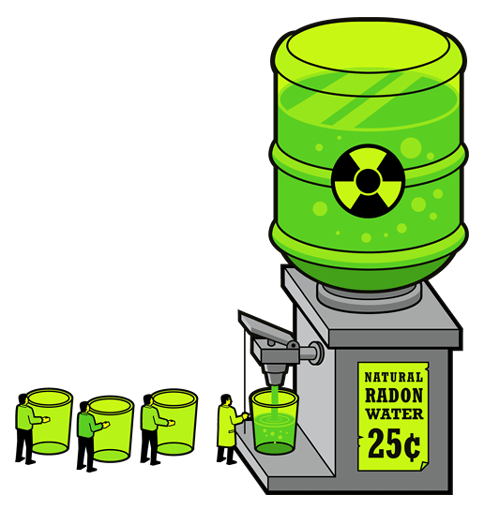
Radioactive chemicals are typically associated with nuclear power plants, people in hazmat suits and creatures with three eyes – but did you know that they are also present in many regions’ drinking water supplies?
While these are admittedly cartoonish stereotypes, radioactive materials can be quite dangerous.
How do radioactive materials get into the water?
- By being deposited in surface water from the air
- By entering ground or surface water from erosion, seepage, or human activities such as mining, farming, storm drainage and industrial waste
- By dissolving from underground mineral deposits as water flows through them
What are the health effects?
Cancer is the main health effect caused by exposure to radioactive substances in your drinking water.
- Alpha emitters. Certain minerals are radioactive and may emit a form of radiation known as alpha radiation. People who drink water containing alpha emitters in excess of EPA’s standard may have an increased risk of getting cancer.
- Beta/photon emitters. Certain minerals are radioactive and may emit forms of radiation known as photons and beta radiation. People who drink water containing beta and photon emitters in excess of EPA’s standard may have an increased risk of getting cancer.
- Combined Radium 226/228. The total amount of radium allowed in drinking water is very small. However, people that drink water containing radium 226 or 228 in excess of EPA’s standard may have an increased risk of getting cancer.
- Radon gas can dissolve and accumulate in underground water sources, such as wells, and in the air in one’s home. Breathing radon can cause lung cancer. Drinking water containing radon presents a risk of developing cancer. Radon in air is more dangerous than radon in water.
Source: Environmental Protection Agency


